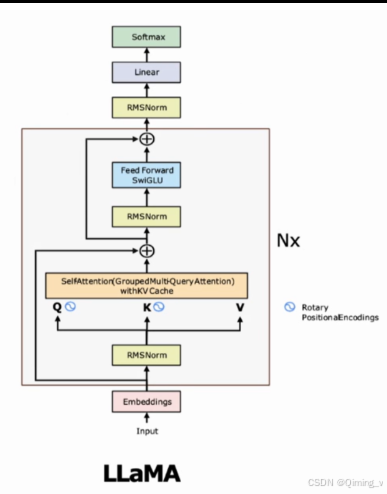环境:rocky Linux9虚拟机四台,zabbix端为服务端,node6为客户端,node4为mariadb主,node7为mariadb从
一、zabbix监控进程
以httpd服务为例
1、客户端安装httpd
[root@node6 ~]# yum -y install httpd
[root@node6 ~]# systemctl restart httpd
[root@node6 ~]# systemctl enable httpd
Created symlink /etc/systemd/system/multi-user.target.wants/httpd.service → /usr/lib/systemd/system/httpd.service.
//查看httpd进程信息
[root@node6 ~]# ps -ef | grep httpd
root 1091 1 0 18:25 ? 00:00:00 /usr/sbin/httpd -DFOREGROUND
apache 1092 1091 0 18:25 ? 00:00:00 /usr/sbin/httpd -DFOREGROUND
apache 1093 1091 0 18:25 ? 00:00:00 /usr/sbin/httpd -DFOREGROUND
apache 1094 1091 0 18:25 ? 00:00:00 /usr/sbin/httpd -DFOREGROUND
apache 1095 1091 0 18:25 ? 00:00:00 /usr/sbin/httpd -DFOREGROUND
root 1306 687 0 18:27 pts/0 00:00:00 grep --color=auto httpd
//只查看HTTPD进程信息,过滤掉grep进程信息,并统计httpd进程行数
[root@node6 ~]# ps -ef | grep httpd | grep -v grep | wc -l
5
[root@node6 ~]# ps -ef | grep -v grep | grep -c httpd
5
2、新建脚本存放目录
[root@node6 ~]# mkdir /etc/zabbix/script
[root@node6 ~]# cd /etc/zabbix/script/
[root@node6 script]# vim check_httpd.sh
//在文件中写入以下信息
#!/bin/bash
count=$(ps -ef | grep -Ev "grep|$0" | grep -c httpd)
if [ $count -eq 0 ];then
echo '1'
else
echo '0'
fi
[root@node6 script]# chmod +x check_httpd.sh
[root@node6 script]# chown -R zabbix.zabbix /etc/zabbix/script/
//测试脚本--0是httpd服务开启,1为关闭
[root@node6 script]# ./check_httpd.sh
0
[root@node6 script]# systemctl stop httpd
[root@node6 script]# ./check_httpd.sh
1
3、修改客户端zabbix配置文件
[root@node6 script]# vim /etc/zabbix/zabbix_agentd.conf
//找到下面这一行,并在其下面添加一行信息
UserParameter=loginusers,who | wc -l
UserParameter=check_httpd,/bin/bash /etc/zabbix/script/check_httpd.sh
//重启服务
[root@node6 script]# systemctl restart zabbix-agent
4、zabbxi平台配置


5、测试
在客户端将httpd服务停止
[root@node6 script]# systemctl stop httpd


恢复httpd服务运行
[root@node6 script]# systemctl restart httpd


二、自定义监控日志
下载log.py来协助我们进行测试,以httpd服务为例
1、上传配置log.py,
//下载log.py环境
[root@node6 script]# yum -y install python3
[root@node6 script]# rz -E
rz waiting to receive.
[root@node6 script]# ls
check_httpd.sh log.py
[root@node6 script]# chmod +x log.py
[root@node6 script]# chown zabbix.zabbix log.py
//给zabbix用户对/val/log/httpd/目录及文件有读和执行的权限
[root@node6 script]# setfacl -m u:zabbix:r-x /var/log/httpd/
log.py
作用:检查日志文件中是否有指定的关键字
第一个参数为日志文件名(必须有,相对路径、绝对路径均可)
第二个参数为seek position文件的路径(可选项,若不设置则默认为/tmp/logseek文件。相对路径、绝对路径均可)
第三个参数为搜索关键字,默认为 Error
2、修改zabbix配置文件
[root@node6 script]# vim /etc/zabbix/zabbix_agentd.conf
//找到以下两行信息,在其下方添加一行信息
UserParameter=loginuser,who | wc -l
UserParameter=check_httpd,/bin/bash /etc/zabbix/script/check_httpd.sh
UserParameter=check_logs[*],/usr/bin/python3 /etc/zabbix/script/log.py $1 $2 $3
//重启zabbix-agentd服务
[root@node6 script]# systemctl restart zabbix-agent
3、测试脚本
[root@node6 script]# python3 log.py /var/log/httpd/error_log
0
[root@node6 script]# echo 'Error' >> /var/log/httpd/error_log
[root@node6 script]# python3 log.py /var/log/httpd/error_log
1
[root@node6 script]# rm -rf /tmp/logseek
0为没有Error日志信息,1为有Error日志信息
测试完成后将写入的Error内容删除,而且因文件/tmp/logseek属于root账户,在web端写入写不进去,所以删除。
4、web监控配置
模板中配置监控项

模板做配置触发器

5、测试
//插入error信息
[root@node6 script]# echo Error >> /var/log/httpd/error_log

//删除Error信息
[root@node6 script]# rm -rf /tmp/logseek

三、监控主从
主从环境:node4为主,node7为从
1、配置/etc/hosts文件
[root@zabbix ~]# vim /etc/hosts
127.0.0.1 localhost localhost.localdomain localhost4 localhost4.localdomain4
::1 localhost localhost.localdomain localhost6 localhost6.localdomain6
192.168.100.115 zabbix.example.com zabbix
192.168.100.116 node6.example.com node6
192.168.100.114 node4.example.com node4
192.168.100.117 node7.example.com node7
~
[root@zabbix ~]# scp /etc/hosts root@192.168.100.114:/etc/hosts
[root@zabbix ~]# scp /etc/hosts root@192.168.100.116:/etc/hosts
[root@zabbix ~]# scp /etc/hosts root@192.168.100.117:/etc/hosts
2、安装mariadb与时钟同步
两边操作都一样
yum -y install chrony mariadb mariadb-server lrzsz
systemctl restart chronyd
systemctl enable chronyd
hwclock -w
systemctl restart mariadb
systemctl enable mariadb
3、maridb初始化
两边操作都一样
[root@node4 ~]# mysql_secure_installation
NOTE: RUNNING ALL PARTS OF THIS SCRIPT IS RECOMMENDED FOR ALL MariaDB
SERVERS IN PRODUCTION USE! PLEASE READ EACH STEP CAREFULLY!
In order to log into MariaDB to secure it, we'll need the current
password for the root user. If you've just installed MariaDB, and
haven't set the root password yet, you should just press enter here.
Enter current password for root (enter for none):
OK, successfully used password, moving on...
Setting the root password or using the unix_socket ensures that nobody
can log into the MariaDB root user without the proper authorisation.
You already have your root account protected, so you can safely answer 'n'.
Switch to unix_socket authentication [Y/n] y
Enabled successfully!
Reloading privilege tables..
... Success!
You already have your root account protected, so you can safely answer 'n'.
Change the root password? [Y/n] y //是否设置密码
New password:
Re-enter new password:
Password updated successfully!
Reloading privilege tables..
... Success!
By default, a MariaDB installation has an anonymous user, allowing anyone
to log into MariaDB without having to have a user account created for
them. This is intended only for testing, and to make the installation
go a bit smoother. You should remove them before moving into a
production environment.
Remove anonymous users? [Y/n] y //是否移除匿名用户
... Success!
Normally, root should only be allowed to connect from 'localhost'. This
ensures that someone cannot guess at the root password from the network.
Disallow root login remotely? [Y/n] n //是否允许root用户远程登录
... skipping.
By default, MariaDB comes with a database named 'test' that anyone can
access. This is also intended only for testing, and should be removed
before moving into a production environment.
Remove test database and access to it? [Y/n] y
- Dropping test database...
... Success!
- Removing privileges on test database...
... Success!
Reloading the privilege tables will ensure that all changes made so far
will take effect immediately.
Reload privilege tables now? [Y/n] y
... Success!
Cleaning up...
All done! If you've completed all of the above steps, your MariaDB
installation should now be secure.
Thanks for using MariaDB!
4、更改mariadb配置文件
主库:
[root@node4 ~]# vim /etc/my.cnf
//在文件最末尾写入
[mysqld]
log_bin=mysql-bin
server_id=20
[root@node4 ~]# systemctl restart mariadb
从库
[root@node7 ~]# vim /etc/my.cnf
//在文件最末尾写入
[mysqld]
log_bin=mysql-bin
server_id=30
[root@node7 ~]# systemctl restart mariadb
4、配置主从
nide4主库端
[root@node4 ~]# mysql -uroot -predhat
Welcome to the MariaDB monitor. Commands end with ; or \g.
Your MariaDB connection id is 4
Server version: 10.5.22-MariaDB-log MariaDB Server
Copyright (c) 2000, 2018, Oracle, MariaDB Corporation Ab and others.
Type 'help;' or '\h' for help. Type '\c' to clear the current input statement.
MariaDB [(none)]> grant all privileges on *.* to root@'%' identified by "redhat";
Query OK, 0 rows affected (0.001 sec)
MariaDB [(none)]> grant replication slave on *.* to 'user'@'slave' identified by 'redhat';
Query OK, 0 rows affected (0.001 sec)
node7从库端
[root@node7 ~]# mysql -uroot -predhat
Welcome to the MariaDB monitor. Commands end with ; or \g.
Your MariaDB connection id is 4
Server version: 10.5.22-MariaDB-log MariaDB Server
Copyright (c) 2000, 2018, Oracle, MariaDB Corporation Ab and others.
Type 'help;' or '\h' for help. Type '\c' to clear the current input statement.
MariaDB [(none)]> grant all privileges on *.* to root@'%' identified by "redhat";
Query OK, 0 rows affected (0.001 sec)
MariaDB [(none)]> change master to master_host='master',master_user='user',master_password='redhat';
Query OK, 0 rows affected (0.003 sec)
MariaDB [(none)]> start slave;
Query OK, 0 rows affected (0.001 sec)
MariaDB [(none)]> show slave status\G;
*************************** 1. row ***************************
Slave_IO_State: Connecting to master
Master_Host: master
Master_User: user
Master_Port: 3306
Connect_Retry: 60
Master_Log_File:
Read_Master_Log_Pos: 4
Relay_Log_File: mariadb-relay-bin.000001
Relay_Log_Pos: 4
Relay_Master_Log_File:
Slave_IO_Running: Connecting //只需要看这两个参数
Slave_SQL_Running: Yes
Replicate_Do_DB:
Replicate_Ignore_DB:
Replicate_Do_Table:
Replicate_Ignore_Table:
Replicate_Wild_Do_Table:
Replicate_Wild_Ignore_Table:
Last_Errno: 0
Last_Error:
Skip_Counter: 0
Exec_Master_Log_Pos: 0
Relay_Log_Space: 256
Until_Condition: None
Until_Log_File:
Until_Log_Pos: 0
Master_SSL_Allowed: No
Master_SSL_CA_File:
Master_SSL_CA_Path:
Master_SSL_Cert:
Master_SSL_Cipher:
Master_SSL_Key:
Seconds_Behind_Master: NULL
Master_SSL_Verify_Server_Cert: No
Last_IO_Errno: 2005
Last_IO_Error: error connecting to master 'user@master:3306' - retry-time: 60 maximum-retries: 86400 message: Unknown server host 'master' (-2)
Last_SQL_Errno: 0
Last_SQL_Error:
Replicate_Ignore_Server_Ids:
Master_Server_Id: 0
Master_SSL_Crl:
Master_SSL_Crlpath:
Using_Gtid: No
Gtid_IO_Pos:
Replicate_Do_Domain_Ids:
Replicate_Ignore_Domain_Ids:
Parallel_Mode: optimistic
SQL_Delay: 0
SQL_Remaining_Delay: NULL
Slave_SQL_Running_State: Slave has read all relay log; waiting for more updates
Slave_DDL_Groups: 0
Slave_Non_Transactional_Groups: 0
Slave_Transactional_Groups: 0
1 row in set (0.000 sec)
ERROR: No query specified
5、配置主从yum源,安装zabbix客户端
两者配置一样,从库也是同样操作
[root@node4 ~]# rz -E
rz waiting to receive. //将zabbix包文件拖进来
[root@node4 ~]# ls
anaconda-ks.cfg zabbix-release-7.0-2.el9.noarch.rpm
//升级更新zabbix包文件
[root@node4 ~]# rpm -Uvh zabbix-release-7.0-2.el9.noarch.rpm
warning: zabbix-release-7.0-2.el9.noarch.rpm: Header V4 RSA/SHA512 Signature, key ID b5333005: NOKEY
Verifying... ################################# [100%]
Preparing... ################################# [100%]
Updating / installing...
1:zabbix-release-7.0-2.el9 ################################# [100%]
vim /etc/yum.repos.d/epel.repo
//在[epel]这个标签的末尾加上一行信息,否则安装会报错
[epel]
......
excludepkgs=zabbix*
vim /etc/yum.repos.d/zabbix.repo
//将该文件内容替换为以下内容,使用阿里源
[zabbix]
name=Zabbix Official Repository - $basearch
baseurl=https://mirrors.aliyun.com/zabbix/zabbix/7.0/rocky/9/$basearch/
enabled=1
gpgcheck=1
gpgkey=file:///etc/pki/rpm-gpg/RPM-GPG-KEY-ZABBIX-B5333005
[zabbix-non-supported]
name=Zabbix Official Repository non-supported - $basearch
baseurl=https://mirrors.aliyun.com/zabbix/non-supported/rhel/9/$basearch/
enabled=1
gpgkey=file:///etc/pki/rpm-gpg/RPM-GPG-KEY-ZABBIX-08EFA7DD
gpgcheck=1
[zabbix-sources]
name=Zabbix Official Repository source code - $basearch
baseurl=https://repo.zabbix.com/zabbix/7.0/rocky/9/SRPMS
enabled=0
gpgkey=file:///etc/pki/rpm-gpg/RPM-GPG-KEY-ZABBIX-B5333005
gpgcheck=1
yum -y install zabbix-agent
6、更改zabbix配置文件,使其被监控
node4与node7主机均同样配置
[root@node4 ~]# vim /etc/zabbix/zabbix_agentd.conf
Server=192.168.100.115
ServerActive=192.168.100.115
Hostname=slave
[root@node4 ~]# systemctl restart zabbix-agent.service
[root@node4 ~]# systemctl enable zabbix-agent.service
7、添加主机到zabbix平台


8、在node7主机上配置脚本
[root@node7 ~]# cd /etc/zabbix/
[root@node7 zabbix]# mkdir script
[root@node7 zabbix]# cd script/
[root@node7 script]# vim mysql_slave_status.sh
#!/bin/bash
USER="root"
PASSWD="redhat"
NAME=$1
function IO {
Slave_IO_Running=`mysql -u $USER -p$PASSWD -e "show slave status\G;" 2> /dev/null |grep Slave_IO_Running |awk '{print $2}'`
if [ $Slave_IO_Running == "Connecting" ];then
echo 0
else
echo 1
fi
}
function SQL {
Slave_SQL_Running=`mysql -u $USER -p$PASSWD -e "show slave status\G;" 2> /dev/null |grep Slave_SQL_Running: |awk '{print $2}'`
if [ $Slave_SQL_Running == "Yes" ];then
echo 0
else
echo 1
fi
}
case $NAME in
io)
IO
;;
sql)
SQL
;;
*)
echo -e "Usage: $0 [io | sql]"
esac
[root@node7 script]# chmod +x mysql_slave_status.sh
[root@node7 script]# chown -R zabbix.zabbix /etc/zabbix/script/
//验证脚本
[root@node7 script]# ./mysql_slave_status.sh io
0
[root@node7 script]# ./mysql_slave_status.sh sql
0
9、编写一个自配置文件,里面指定上面编写的脚本的路径,然后重启服务
[root@node7 script]# cd /etc/zabbix/zabbix_agentd.d/
[root@node7 zabbix_agentd.d]# vim userparameter_mysql_slave.conf
//在文件内写入以下内容
UserParameter=mysql.slave[*],/etc/zabbix/script/mysql_slave_status.sh $1
[root@node7 zabbix_agentd.d]# systemctl restart zabbix-agent.service
10、去zabbix server验证状态
[root@zabbix ~]# yum -y install zabbix-get
//验证的结果如果是0,为正常,如果为1,则异常
[root@zabbix ~]# zabbix_get -s 192.168.100.117 -k mysql.slave[sql]
0
[root@zabbix ~]# zabbix_get -s 192.168.100.117 -k mysql.slave[io]
0
11、给node7主机添加监控项触发器


触发器


验证
[root@node7 ~]# mysql -uroot -predhat
Welcome to the MariaDB monitor. Commands end with ; or \g.
Your MariaDB connection id is 24
Server version: 10.5.22-MariaDB-log MariaDB Server
Copyright (c) 2000, 2018, Oracle, MariaDB Corporation Ab and others.
Type 'help;' or '\h' for help. Type '\c' to clear the current input statement.
MariaDB [(none)]> stop slave;
Query OK, 0 rows affected (0.002 sec)




















